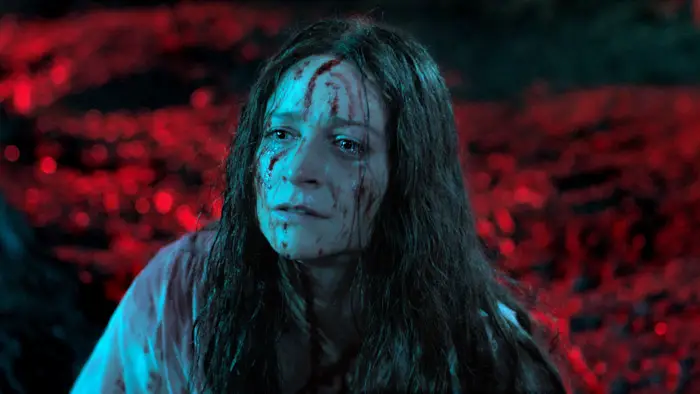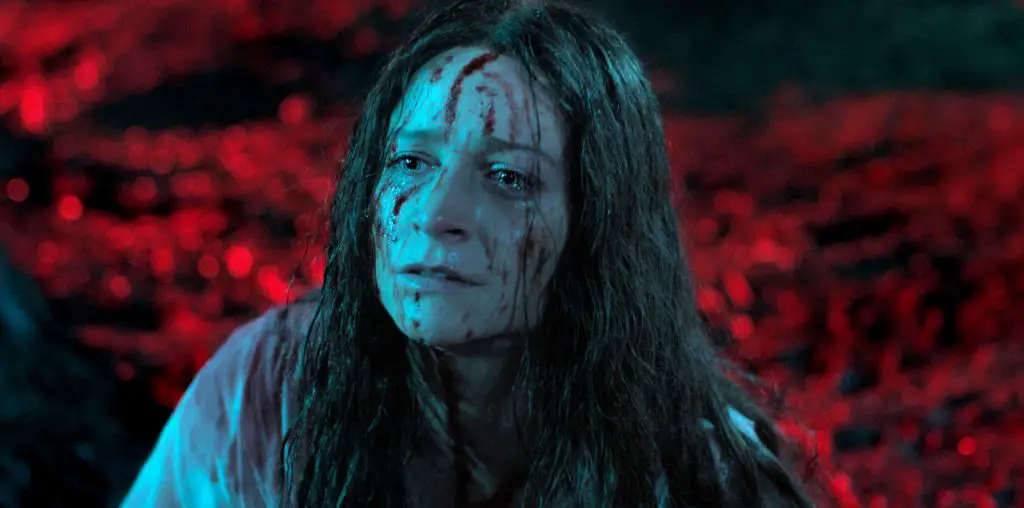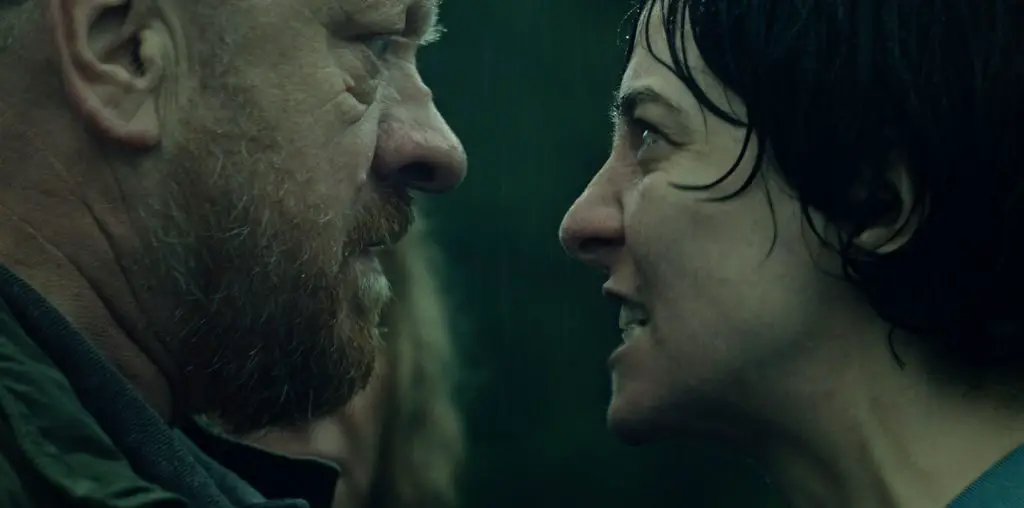
It’s really good to work with people on the same page and not work with**holes. Was there a particular film that Don’t Go Into the Church is modeled after?
Bailey-Bond: I was looking at this eerie, gothic folk horror. There’s something about the ’70s British folk horror: the voices, the sound. There’s emptiness, and there’s echoing. It’s so haunting. One of the films was Blood on Satan’s Claw. That was definitely an influence. I also looked at another video nasty called Axe or Lisa, Lisa. ’70s horror, basically.
All aspects of design in this film are on point. I specifically wanted to talk about Saffron Cullane, the costume designer. I think that Enid’s costumes do so much to tell us who she is before we even hear her speak. What was working with Saffron like?
Bailey-Bond: I’ve worked with Saffron on some of my short films as well. I already knew how amazing she was. One of the really exciting things about working on this film was when I went out and had conversations with my heads of department. They read all that I intended in the script, but they’re translating it into their own field. Saffron and I were talking a lot about how we show Enid’s deterioration through costume. It wasn’t about it being overblown.
In the beginning, she’s very buttoned-up, so there are a lot of tight collars. By the time she leaves the censor’s office, she’s got this open-neck top. There’s a physical falling apart of Enid that’s shown through the costume. Also, there’s how we used color, which marries up with production design and cinematography. So you’re making Enid and the other characters part of the world of the censor’s office. In the beginning, they’re all wearing similar blues and grays. Enid breaks away from that. She starts wearing deep red or purple t-shirts. Again, the details are quite small, but we were chipping away at her physically as well as mentally.
Algar: Working with Saffron, she’s such a joy. It’s a period piece. My only contribution to the costume was the glasses. It was the idea that these protect her, like armor. I love that era. I love those clothes.
Bailey-Bond: The things that Saffron does with costume you don’t even necessarily see on screen. She really thinks about the character. She even got down to sourcing underwear from the period. The shape of the costume on the outside is how it would be during that period because your underwear makes a specific shape.

“…doesn’t matter if they’re good or bad, you learn something about yourself.”
This is obviously my own interpretation, but I think an ongoing theme of Censor is the cathartic power of art. How have you both experienced that power personally?
Algar: Acting for me is cathartic. It’s like my therapy. I’m so lucky I get to do therapy every week. Experiencing the lives of other characters, walking in their shoes. It doesn’t matter if they’re good or bad. You learn something about yourself. You’re constantly asking yourself questions that I wouldn’t have had the opportunity to look for otherwise.
And you get paid to do that. That’s awesome!
Algar: I get paid to do therapy!
Usually, it’s the other way around!
Bailey-Bond: For me, it’s two things. I think that creative expression is cathartic. Putting a little bit of yourself into your work and making it productive. Creating art out of something that might not be positive in your life. I think that’s a really good thing to do. Also, I was thinking about our relationship with horror. What’s the benefit of horror? Horror can be really cathartic as a genre. It creates a safe place for us to have that catharsis. So there are things that we can live through in films. We can go through it and come out on the other side a little bit lighter, perhaps. That’s when a film is really good. It can do that for you.


